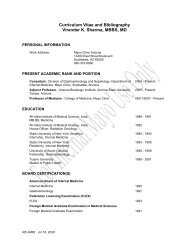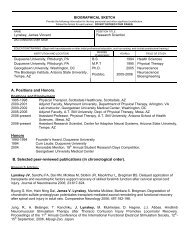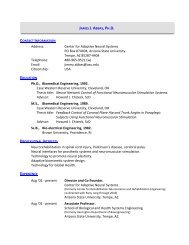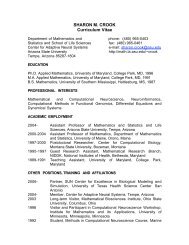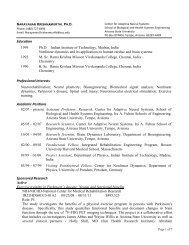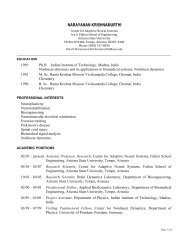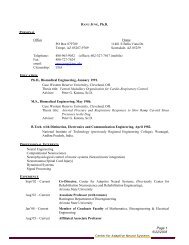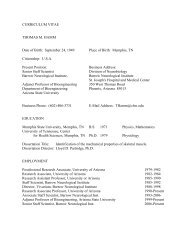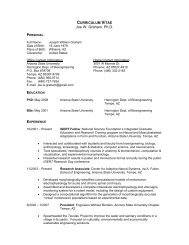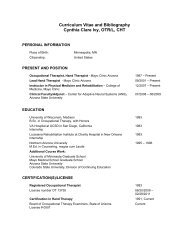ASU FC S 04 - Center for Adaptive Neural Systems - Arizona State ...
ASU FC S 04 - Center for Adaptive Neural Systems - Arizona State ...
ASU FC S 04 - Center for Adaptive Neural Systems - Arizona State ...
Create successful ePaper yourself
Turn your PDF publications into a flip-book with our unique Google optimized e-Paper software.
Faculty & Research News<br />
to mimic how our bodies’ own nervous system functions and use this<br />
knowledge as the foundation <strong>for</strong> designing engineering systems. “The<br />
goal is to get FDA approval <strong>for</strong> our devices,” said Jung. “It would be<br />
the translation from an idea all the way up to a clinical application; the<br />
concept of going from lab bench to bedside.”<br />
The spinal cord creates electrical signals in order to get muscles to<br />
contract, so by recording this electrical signal and measuring the biomechanical<br />
movements generated by the contractions, they can reproduce<br />
the signal to create a desired response. “It’s a matter of abstraction,”<br />
said Jung. “We per<strong>for</strong>m animal studies to understand how the<br />
nervous system works, how it is affected by trauma and to understand<br />
how our devices can interact with the nervous system.” Jung and<br />
Abbas apply the results from these animal studies into designing<br />
devices that help people with spinal cord injury regain function. “We<br />
have studies going on that look at the idea of using electrical stimulation<br />
to activate muscles in therapy to promote better recovery after<br />
incomplete spinal cord injury,” said Abbas.<br />
Another useful feature integrated into the control system is an adaptive<br />
logic that responds to an individual’s rehabilitation program. “Much<br />
of the research we are doing is on how we can improve the quality of<br />
control by automatically adjusting the stimulation levels,” said Abbas.<br />
“We’re refining the design and we’re doing animal studies and human<br />
subjects testing behind this concept of adaptive control and electrical<br />
stimulation to get better recovery after incomplete spinal cord injury,”<br />
This approach is also being applied to help other patients with neurological<br />
disabilities like Parkinson’s disease.<br />
“There are some opportunities <strong>for</strong> using similar<br />
types of approaches to develop systems to assist<br />
people with stroke, or brain injury or Parkinson’s<br />
disease,” said Abbas. He and his collaborators<br />
from clinical sites around Phoenix are developing<br />
new techniques to improve deep brain stimulation<br />
systems, which are implants that alleviate the<br />
tremors associated with Parkinson’s disease. “We<br />
hope we can help shape the evolution of the next<br />
generation of deep brain stimulation systems.”<br />
James Abbas (above) with research students at<br />
the <strong>Center</strong> <strong>for</strong> Rehabilitation Neuroscience and<br />
Rehabilitation Engineering. Students (below)<br />
demonstrate muscle rehabilitation using equipment<br />
in the lab.<br />
For more in<strong>for</strong>mation on spinal cord<br />
injury rehabilitation work, see<br />
http://eas.asu.edu/~bme/new/.<br />
IRA A. FULTON SCHOOL OF ENGINEERING – SPRING 20<strong>04</strong> 23



